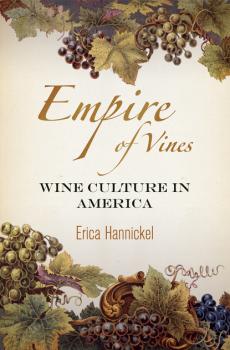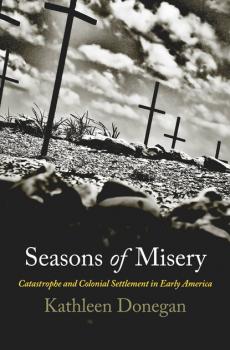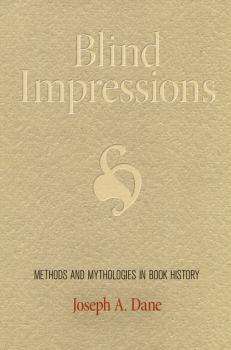ТОП просматриваемых книг сайта:
Историческая литература
Различные книги в жанре Историческая литература, доступные для чтения и скачиванияАннотация
India and China dominate the Asian continent but are separated by formidable geographic barriers and language differences. For many centuries, most of the information that passed between the two lands came through Silk Route intermediaries in lieu of first-person encounters—leaving considerable room for invention. From their introduction to Indian culture in the first centuries C.E., Chinese thinkers, writers, artists, and architects imitated India within their own borders, giving Indian images and ideas new forms and adapting them to their own culture. Yet India's impact on China has not been greatly researched or well understood. India in the Chinese Imagination takes a new look at the ways the Chinese embedded India in diverse artifacts of Chinese religious, cultural, artistic, and material life in the premodern era. Leading Asian studies scholars explore the place of Indian myths and storytelling in Chinese literature, how Chinese authors integrated Indian history into their conception of the political and religious past, and the philosophical relationships between Indian Buddhism, Chinese Buddhism, and Daoism. This multifaceted volume, illustrated with over a dozen works of art, reveals the depth and subtlety of the encounter between India and China, shedding light on what it means to imagine another culture—and why it matters. Contributors: Stephen R. Bokenkamp, Bernard Faure, John Kieschnick, Victor H. Mair, John R. McRae, Christine Mollier, Meir Shahar, Robert H. Sharf, Nobuyoshi Yamabe, Ye Derong, Shi Zhiru.
Аннотация
The lush, sun-drenched vineyards of California evoke a romantic, agrarian image of winemaking, though in reality the industry reflects American agribusiness at its most successful. Nonetheless, as author Erica Hannickel shows, this fantasy is deeply rooted in the history of grape cultivation in America. Empire of Vines traces the development of wine culture as grape growing expanded from New York to the Midwest before gaining ascendancy in California—a progression that illustrates viticulture's centrality to the nineteenth-century American projects of national expansion and the formation of a national culture. Empire of Vines details the ways would-be gentleman farmers, ambitious speculators, horticulturalists, and writers of all kinds deployed the animating myths of American wine culture, including the classical myth of Bacchus, the cult of terroir , and the fantasy of pastoral republicanism. Promoted by figures as varied as horticulturalist Andrew Jackson Downing, novelist Charles Chesnutt, railroad baron Leland Stanford, and Cincinnati land speculator Nicholas Longworth (known as the father of American wine), these myths naturalized claims to land for grape cultivation and legitimated national expansion. Vineyards were simultaneously lush and controlled, bearing fruit at once culturally refined and naturally robust, laying claim to both earthy authenticity and social pedigree. The history of wine culture thus reveals nineteenth-century Americans' fascination with the relationship between nature and culture.
Информация о книге
Автор произведения Erica Hannickel
Аннотация
The stories we tell of American beginnings typically emphasize colonial triumph in the face of adversity. But the early years of English settlement in America were characterized by catastrophe: starvation, disease, extreme violence, ruinous ignorance, and serial abandonment. Seasons of Misery offers a provocative reexamination of the British colonies' chaotic and profoundly unstable beginnings, placing crisis—both experiential and existential—at the center of the story. At the outposts of a fledgling empire and disconnected from the social order of their home society, English settlers were both physically and psychologically estranged from their European identities. They could not control, or often even survive, the world they had intended to possess. According to Kathleen Donegan, it was in this cauldron of uncertainty that colonial identity was formed. Studying the English settlements at Roanoke, Jamestown, Plymouth, and Barbados, Donegan argues that catastrophe marked the threshold between an old European identity and a new colonial identity, a state of instability in which only fragments of Englishness could survive amid the upheavals of the New World. This constant state of crisis also produced the first distinctively colonial literature as settlers attempted to process events that they could neither fully absorb nor understand. Bringing a critical eye to settlers' first-person accounts, Donegan applies a unique combination of narrative history and literary analysis to trace how settlers used a language of catastrophe to describe unprecedented circumstances, witness unrecognizable selves, and report unaccountable events. Seasons of Misery addresses both the stories that colonists told about themselves and the stories that we have constructed in hindsight about them. In doing so, it offers a new account of the meaning of settlement history and the creation of colonial identity.
Аннотация
Workers in the United States are losing sleep. In the global economy a growing number of employees hold jobs—often more than one at once—with unpredictable hours. Even before the rise of the twenty-four-hour workplace, the relationship between sleep and industry was problematic: sleep is frequently cast as an enemy or a weakness, while constant productivity and flexibility are glorified at the expense of health and safety. Dangerously Sleepy is the first book to track the longtime association of overwork and sleep deprivation from the nineteenth century to the present. Health and labor historian Alan Derickson charts the cultural and political forces behind the overvaluation—and masculinization—of wakefulness in the United States. Since the nineteenth century, men at all levels of society have toiled around the clock by necessity: steel workers coped with rotating shifts, Pullman porters grappled with ever-changing timetables and unrelenting on-call status, and long-haul truckers dealt with chaotic life on the road. But the dangerous realities of exhaustion were minimized and even glamorized when the entrepreneurial drive of public figures such as Thomas Edison and Donald Trump encouraged American men to deny biological need in the name of success. For workers, resisting sleep became a challenge of masculine strength. This lucid history of the wakeful work ethic suggests that for millions of American men and women, untenable work schedules have been the main factor leading to sleep loss, newer ailments such as shift work sleep disorder, and related morbidity and mortality. Dangerously Sleepy places these public health problems in historical context.
Аннотация
"As bibliographers or book historians, we perform our work by changing the function of the objects we study. We rarely pick up an Aldine edition to read one of the classical texts it contains. . . . Print culture, under this notion, is not a medium for writing or thought but a historical object of study; our bibliographical field, our own concoction, becomes the true referent of the objects we define as its foundation."—From the Introduction What is a book in the study of print culture? For the scholar of material texts, it is not only a singular copy carrying the unique traces of printing and preservation efforts, or an edition, repeated and repeatable, or a vehicle for ideas to be abstracted from the physical copy. But when the bibliographer situates a book copy within the methods of book history, Joseph A. Dane contends, it is the known set of assumptions which govern the discipline that bibliographic arguments privilege, repeat, or challenge. «Book history,» he writes, «is us.» In Blind Impressions , Dane reexamines the field of material book history by questioning its most basic assumptions and definitions. How is print defined? What are the limits of printing history? What constitutes evidence? His concluding section takes form as a series of short studies in theme and variation, considering such matters as two-color printing, the composing stick used by hand-press printers, the bibliographical status of book fragments, and the function of scholarly illustration in the Digital Age. Meticulously detailed, deeply learned, and often contrarian, Blind Impressions is a bracing critique of the way scholars define and solve problems.
Аннотация
At first glance, the Ford Foundation and the black power movement would make an unlikely partnership. After the Second World War, the renowned Foundation was the largest philanthropic organization in the United States and was dedicated to projects of liberal reform. Black power ideology, which promoted self-determination over color-blind assimilation, was often characterized as radical and divisive. But Foundation president McGeorge Bundy chose to engage rather than confront black power's challenge to racial liberalism through an ambitious, long-term strategy to foster the «social development» of racial minorities. The Ford Foundation not only bankrolled but originated many of the black power era's hallmark legacies: community control of public schools, ghetto-based economic development initiatives, and race-specific arts and cultural organizations. In Top Down , Karen Ferguson explores the consequences of this counterintuitive and unequal relationship between the liberal establishment and black activists and their ideas. In essence, the white liberal effort to reforge a national consensus on race had the effect of remaking racial liberalism from the top down—a domestication of black power ideology that still flourishes in current racial politics. Ultimately, this new racial liberalism would help foster a black leadership class—including Barack Obama—while accommodating the intractable inequality that first drew the Ford Foundation to address the «race problem.»
Информация о книге
Автор произведения Karen Ferguson
Marriage, Sex, and Civic Culture in Late Medieval London - Shannon McSheffrey
The Middle Ages SeriesАннотация
Awarded honorable mention for the 2007 Wallace K. Ferguson Prize sponsored by the Canadian Historical Association How were marital and sexual relationships woven into the fabric of late medieval society, and what form did these relationships take? Using extensive documentary evidence from both the ecclesiastical court system and the records of city and royal government, as well as advice manuals, chronicles, moral tales, and liturgical texts, Shannon McSheffrey focuses her study on England's largest city in the second half of the fifteenth century. Marriage was a religious union—one of the seven sacraments of the Catholic Church and imbued with deep spiritual significance—but the marital unit of husband and wife was also the fundamental domestic, social, political, and economic unit of medieval society. As such, marriage created political alliances at all levels, from the arena of international politics to local neighborhoods. Sexual relationships outside marriage were even more complicated. McSheffrey notes that medieval Londoners saw them as variously attributable to female seduction or to male lustfulness, as irrelevant or deeply damaging to society and to the body politic, as economically productive or wasteful of resources. Yet, like marriage, sexual relationships were also subject to control and influence from parents, relatives, neighbors, civic officials, parish priests, and ecclesiastical judges. Although by medieval canon law a marriage was irrevocable from the moment a man and a woman exchanged vows of consent before two witnesses, in practice marriage was usually a socially complicated process involving many people. McSheffrey looks more broadly at sex, governance, and civic morality to show how medieval patriarchy extended a far wider reach than a father's governance over his biological offspring. By focusing on a particular time and place, she not only elucidates the culture of England's metropolitan center but also contributes generally to our understanding of the social mechanisms through which premodern European people negotiated their lives.
Аннотация
From La Follette to Faubus, from Rockefeller to Reagan, U.S. governors have addressed some of the most contentious policy questions of the twentieth century. In doing so, they not only responded to dramatic changes in the political landscape, they shaped that landscape. The influence of governors has been felt both within the states and across the nation. It is telling that four of the last five U.S. Presidents were former state governors. A Legacy of Innovation: Governors and Public Policy examines the changing role of the state governor during the «American Century.» In this volume, top political scientists, historians, and journalists track the evolution of gubernatorial leadership as it has dealt with critical issues, including conservation, transportation, civil rights, education, globalization, and health care. As the most visible state officials, twentieth-century governors often found themselves at the center of America's conflicting political tendencies. A Legacy of Innovation describes how they negotiated the tensions between increasing democratization and the desire for expert control, the rise of interest groups and demise of political parties, the pull of regionalism against growing nationalism, and the rising demand for public services in a society that fears centralized government. In their responses to these conflicts, governors helped shape the institutions of modern American government. As state governments face new policy challenges in the twenty-first century, A Legacy of Innovation will serve as a valuable source of information for political scientists and policy makers alike.
Аннотация
In A Legacy of Leadership , top scholars and journalists create a new framework for understanding the contributions governors have made to defining democracy and shaping American history. Structured chronologically, A Legacy of Leadership places governors in contrast and comparison with one another as well as within the context of their times to show how a century of dramatic developments—war and peace, depression and prosperity—led governors to rethink and expand their positions of leadership. The nine chapters of compelling new scholarship presented here connect the experiences of dynamic individual governors and the evolution of the gubernatorial office to the broader challenges the United States has faced throughout the turbulent twentieth century. Taken together, they demonstrate how interstate cooperation became essential as governors increasingly embraced national and international perspectives to promote their own states' competitiveness. Published for the centennial of the National Governors Association, A Legacy of Leadership is an eloquent demonstration of how, to a great extent, we live in a country that governors created.
Аннотация
The Way of Improvement Leads Home traces the short but fascinating life of Philip Vickers Fithian, one of the most prolific diarists in early America. Born to Presbyterian grain-growers in rural New Jersey, he was never quite satisfied with the agricultural life he seemed destined to inherit. Fithian longed for something more—to improve himself in a revolutionary world that was making upward mobility possible. While Fithian is best known for the diary that he wrote in 1773-74 while working as a tutor at Nomini Hall, the Virginia plantation of Robert Carter, this first full biography moves beyond his experience in the Old Dominion to examine his inner life, his experience in the early American backcountry, his love affair with Elizabeth Beatty, and his role as a Revolutionary War chaplain. From the villages of New Jersey, Fithian was able to participate indirectly in the eighteenth-century republic of letters—a transatlantic intellectual community sustained through sociability, print, and the pursuit of mutual improvement. The republic of letters was above all else a rational republic, with little tolerance for those unable to rid themselves of parochial passions. Participation required a commitment to self-improvement that demanded a belief in the Enlightenment values of human potential and social progress. Although Fithian was deeply committed to these values, he constantly struggled to reconcile his quest for a cosmopolitan life with his love of home. As John Fea argues, it was the people, the religious culture, and the very landscape of his «native sod» that continued to hold Fithian's affections and enabled him to live a life worthy of a man of letters.










